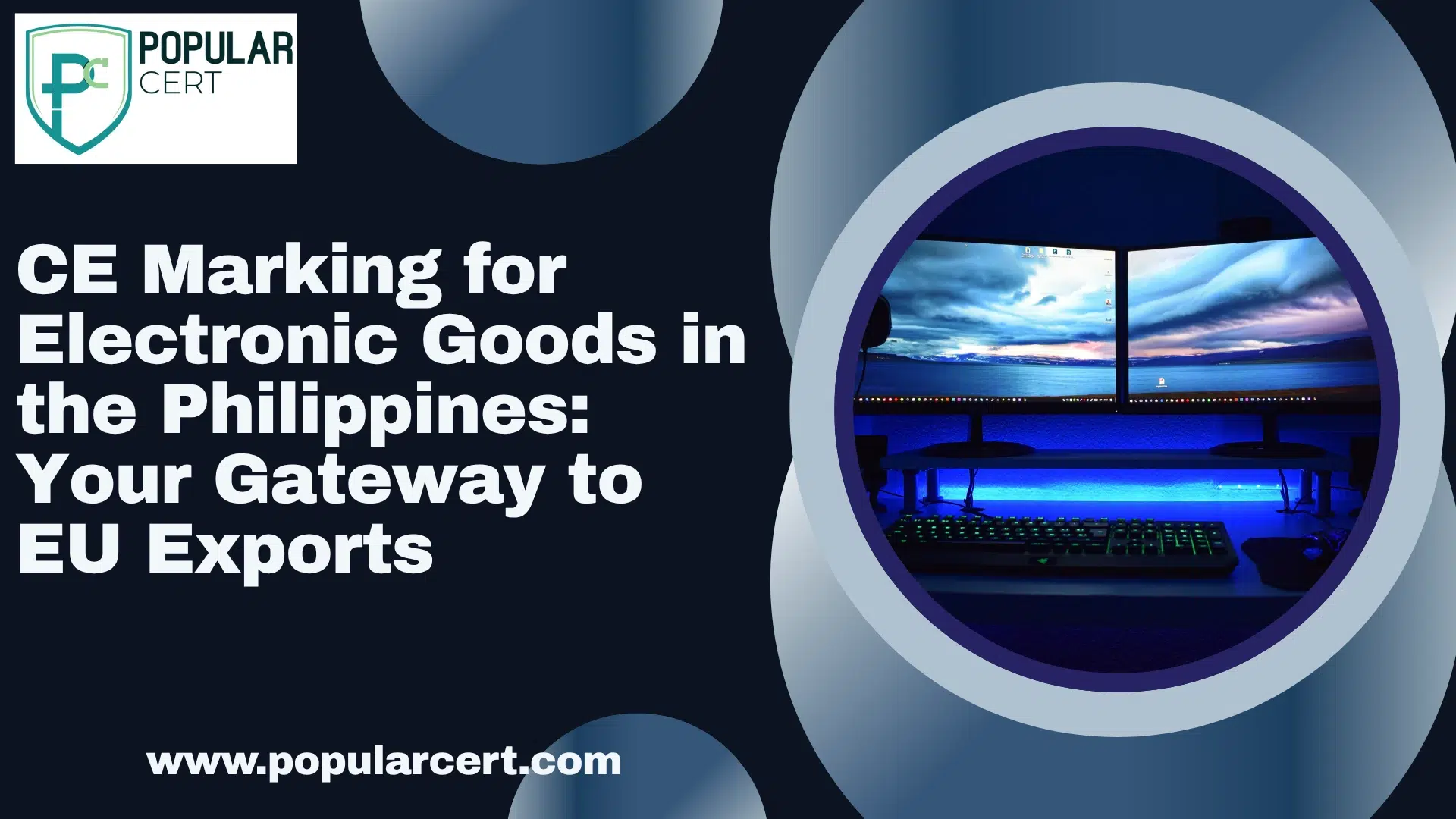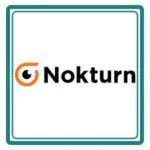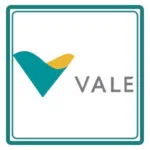CE Marking for Electronic Goods in the Philippines: Your Gateway to EU Exports

For Filipino electronics manufacturers and exporters eyeing the European Union, cracking the EU market can significantly boost growth. Yet, before your gadgets can be showcased in shops from Paris to Berlin, you must first clear a non-negotiable hurdle: securing the CE marking.
This guide demystifies CE marking Certification In Philippines: what it is, why it matters for electronics, and how Philippine companies can meet the requirement smoothly with the right ally—Popularcert. Whether you’re venturing into exports for the first time or broadening your lineup, you’ll find actionable insights to streamline compliance and speed up delivery to EU customers.
What is CE Marking?
CE marking stands for “Conformité Européenne,” or European Conformity, and it shows that a product satisfies EU laws on safety, health, and environmental safeguards. The mark is legally required for several product categories sold in the European Economic Area (EEA). Spot the CE symbol and you know the item meets the relevant EU directives, granting it the freedom to circulate throughout the EU market without extra regulatory checks.
You’ll need CE marking for several types of products, including:
- Electrical and electronic devices
- Machinery
- Medical instruments
- Toys
- Construction items
- Pressure equipment
- Radio and telecommunications terminal equipment
For Filipino manufacturers of electronic goods—from everyday gadgets to complex industrial components—CE marking is typically an unavoidable hurdle if you’re aiming for the European Union.
CE Marking Benefits for Electronic Manufacturers in the Philippines
Why make CE marking a priority?
- Entry to the EU: The CE mark is the pass that lets you trade in all 30-plus EU countries without facing extra checks or paperwork delays.
- Global Confidence: CE-labeled products are automatically viewed as reliable. The mark tells customers, distributors, and authorities that you’ve met some of the toughest international standards.
- Wider Export Possibilities: Aligning with CE requirements lifts your brand into the global ring, not only in Europe but in other markets that adopt EU benchmarks as a baseline.
- Lower Risk of Border Issues: Goods without CE marking can be held up at ports, sent back, or outright banned in the EU. Getting certified means you can avoid these costly and damaging scenarios.
CE Marking Requirements in the Philippines
CE marking depends on EU legislation, not Philippine law, yet Philippine exporters must proactively ensure their products meet these rules.
General EU Requirements
To earn a CE mark, products must conform to relevant EU directives. For electronics, these are key directives:
- EMC Directive (2014/30/EU): electromagnetic compatibility
- LVD Directive (2014/35/EU): low-voltage safety
- RoHS Directive (2011/65/EU): restriction of hazardous substances
You must then:
- carry out a conformity assessment
- create a technical documentation file
- issue a Declaration of Conformity (DoC)
- Adapting to the Philippine Context
- Although the Philippines has no domestic CE authorization body, local firms can:
- engage local consultants, such as Popularcert, for documentation and compliance support
- partner with EU-notified bodies whenever the directives call for third-party assessment
- train in-house personnel on EU technical requirements
Types Of Certification
- ISO Certification
- ISO 9001 Certification
- ISO 14001 Certification
- ISO 45001 Certification
- ISO 22000 Certification
- ISO 27001 Certification
- ISO 17025 Certification
- ISO 13485 Certification
- ISO 20000-1 Certification
- ISO 22301 Certification
- ISO 50001 Certification
- ISO 37001 Certification
- IATF 16949 Certification
- ISO 29001 Certification
- ISO 31000 Certification
- ISO 20121 Certification
- ISO 10002 Certification
- ISO 41001 Certification
Get Free Consultation
Our Clients


















Step-by-Step Process to Get CE Marking for Electronics
Here’s a simple list of recommended actions:
Step 1 – Identify Relevant EU Directive(s)
Each product falls under certain directives. For electronics, this might include the LVD, EMC Directive, the Radio Equipment Directive, or additional requirements.
Step 2 – Meet Essential Requirements
You need to confirm your product is safe to use, manages electromagnetic interference, doesn’t use any banned substances, and, when relevant, meets energy-efficiency targets.
Step 3 – Perform Conformity Assessment
Based on your product type and its risk profile, you can either self-declare conformity for low-risk items or work with a notified body for those classified as high-risk.
Step 4 – Prepare Technical Documentation
Your technical file should contain design drawings, test outcomes, risk evaluations, and details of your manufacturing processes. Keep this file updated for a decade following the last product sold.
Step 5 – Affix the CE Mark and Issue DoC
After confirming conformity, visibly place the CE mark on your product and provide a signed Declaration of Conformity from the manufacturer or authorized rep. Your product can then be legally sold across the EU.
Common Challenges and Mistakes to Avoid
Steering clear of these common missteps can streamline processes and sidestep legal hassles:
- Relying on expired EU directives
- Leaving technical files incomplete or missing
- Bypassing the conformity assessment step
- Misplacing the CE mark on the product
- Failing to revise certification after design revisions
Collaborating with a seasoned consultant like Popularcert means these potential pitfalls are flagged and resolved well before they escalate.
How Popularcert Helps with CE Marking in the Philippines
Popularcert stands at the forefront of product certification services, guiding Philippine electronics manufacturers through CE marking with clarity and speed.
Here’s what they deliver:
- Directive Mapping and Gap Assessment
Popularcert clarifies which EU directives govern your product and zeroes in on any compliance shortfalls.
- Comprehensive Documentation Guidance
The team assembles a complete, audit-ready technical dossier tailored to your product.
- Conformity Assessment Facilitation
When third-party evaluation is necessary, Popularcert links you with EU-notified bodies and streamlines the entire assessment.
- Training and Continuous Support
Looking to strengthen your in-house team? Popularcert provides tailored training so your staff can navigate compliance with assurance.
- Ready-for-Export Certification
Once complete, Popularcert delivers a CE mark that guarantees your product is EU export-ready.
Ready to Export? Get CE Certified with Popularcert
CE marking is not just a regulatory formality; it’s your gateway to thriving in the European market. From circuit boards and smart devices to consumer electronics, achieving CE compliance lets your products move freely across borders and unlocks attractive global revenue opportunities.
Popularcert stands ready in the Philippines to help you secure CE marking without the hassle. Their seasoned consultants, deep industry know-how, and direct links to EU authorities streamline the certification journey so you can focus on innovation.
Reach out to Popularcert now and let them simplify, legalize, and profitably empower your electronics exports to the EU.
GET A FREE CONSULTATION NOW
FAQ
Is CE marking a must for selling products in the EU?
Absolutely. Any electronic item that fits a CE directive must carry the mark if it’s going to be sold in the EU.
Can firms in the Philippines declare CE compliance on their own?
They can, but only for products assessed as low risk and only if the directive permits it. Most electronic items will still need a notified body’s assessment.
What’s a Declaration of Conformity (DoC)?
It’s the official document that says your product meets the relevant EU directives. It has to be signed and stored for future reference.
What’s in the technical documentation?
It includes test results, product schematics, component specs, risk analyses, and a copy of the DoC.
How long does it take to get CE marking certification?
Delays can happen depending on product type, risk level, and how prepared you are. Partnering with Popularcert usually speeds up the entire procedure.
Why choose PopularCert?
Risk losing customers, contracts, and operational efficiency to certified competitors.
